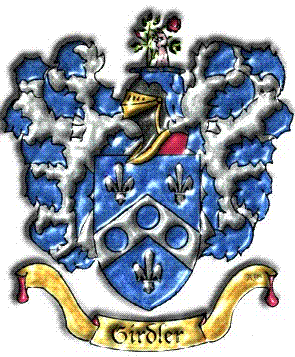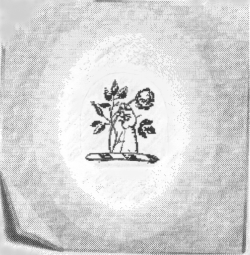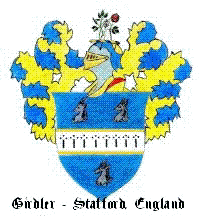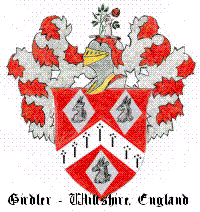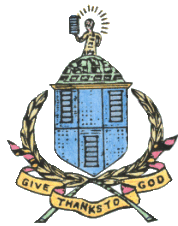"Girdler family Coat of Arms", Granted 1327 AD, England.
The family crest can be found in "Fairbairn's Book of Crests of the
Families of Great Britain and Ireland". The arms are found in "Burke's
General Armory", described as "azure on a chevron between three
Fleur-de-Lis argent as many hurts". The arms are displayed by a (blue)
shield upon which are three round (blue) balls on a (silver) chevron
with three (silver) Fleurs, two above and one below the chevron, or
inverted v-shaped band which signifies protection and was often
granted as a reward for some notable achievement or for work of faithful
service. The "Fleur-De-Lis" is a three-leafed flower which is highly
regarded as an attribute of royalty, being embodied in the emblem of
France. It's leaves are significant of faith, wisdom and valor respectively.
According to Christian symbolism, the Fleur-De-Lis indicates the trinity
and it was also employed to represent the purity of the Virgin Mary.
"Argent" refers to the color silver. "as many hurts" signifies, blue
roundels. The "hurt" term being taken from the Hurtle or Whortleberry.
Above the shield is the "Helmet" and "Mantle". The Helmet is metallic
garnished gold lined with red silk. A blue and silver Mantling flows from
the helmet, It being rent and torn by battle. Attached to the top of the
helmet by the "Wreath" is the "crest" which is best described as; A hand
issuing from the wreath, pulling a "Rose" from a bush. The "hand" is
symbolic of a pledge of faith, sincerity and justice. The "Rose" is the
symbol of beauty, purity and life. These attributes are embodied in
Christ who was referred to in the scriptures as the "Rose of Sharon".......
|
|
|
The Coat-of-Arms was reduced to it's present system by the French, and it was during
that period that the crest was generally
adopted. The crests, later were used to identify
individuals, or families, in the use of wax
seals on legal documents, letters and as symbols
on/or within a dwelling.
Some entertain the idea that these symbols indicate an aristocratic or exclusive class,
but
these badges were a reward of
personal merit, and could be earned by the humblest as well
as the highest. More commonly today
arms are used to honor our family ancestors who bore
them under the surname they left as
part of their legacy to us. The right to use arms differs in
various countries. It may have been
the right of an individual only or as one to be passed on
by a person's descendants, or a
relative and their descendants. Although there are no laws to
govern heraldry in America, the use
of arms has existed here from very early colonial times.
With
multiple family arms granted, the normal display usage is to use the arms issued to
your particular lineage. If
your direct lineage is not clear, the use of the earliest arms
granted seems to be the proper
display option.
There
are two (2) additional Girdler arms granted that post-date the Girdler 1327 issue:
Girdler- (Co. Stafford) Az. a fesse crm. cotised or, betw. three goats heads erased
ar.
These Arms are the Right of the heirs and other descendants of the late
"Joseph Girdler" of the inner-Temple, Esq; Serjeant at Law.
Girdler- (Clack, Co. Wilts) Gu. a chev. erm.
betw. three lozenges ar. each charged with a goats head erased of the
first.
These are the
Arms of William Girdler, of the Cittye of Bristowe, Gent., married Alice, Had issue,
Thomas, son & heir; John, second son. John Girdler of Clack, Co. Wilts,
Gent, married Elizabeth, Dau. of Griffeth Curteys in Co. Berks, Esq., and had
issue Josyes {Joel?}, eldest son and heir apparent.
|
|
